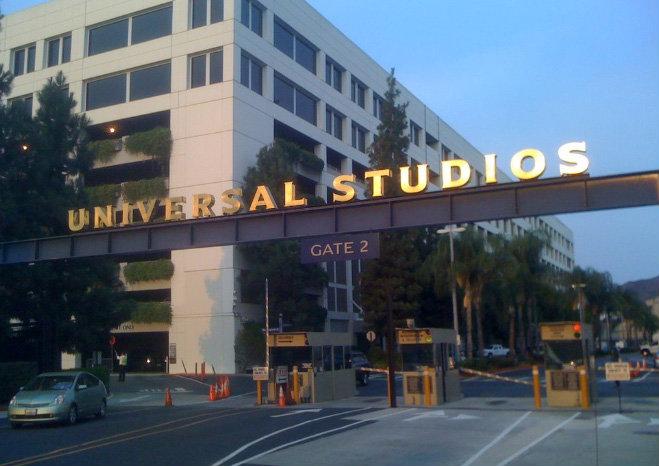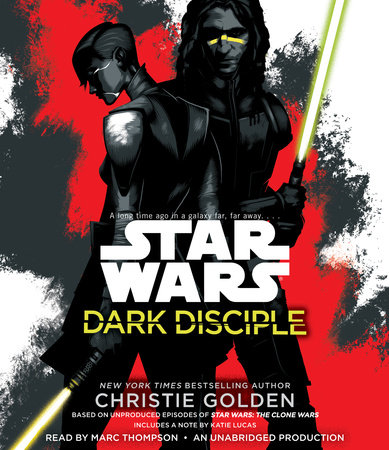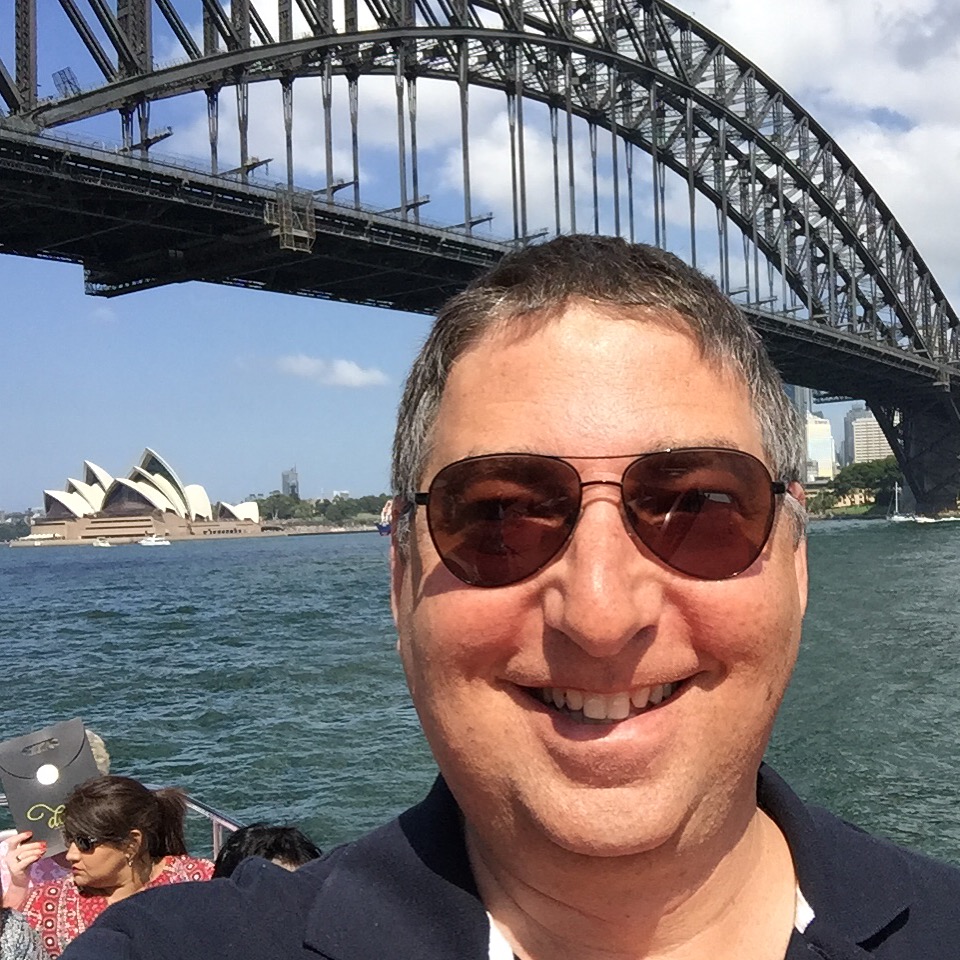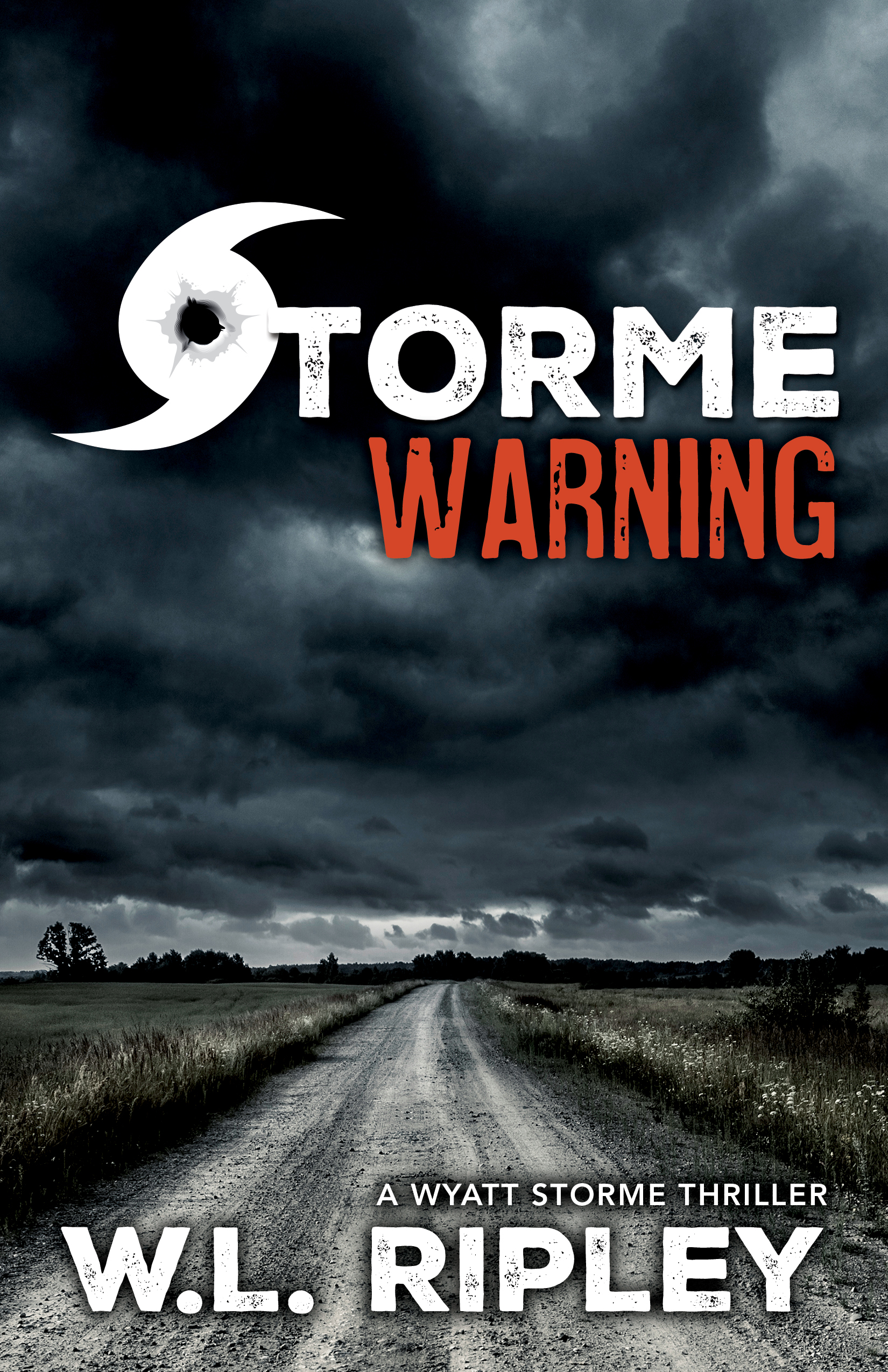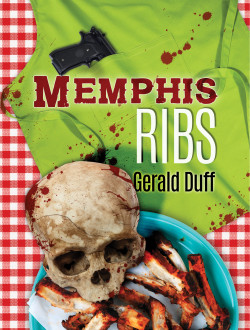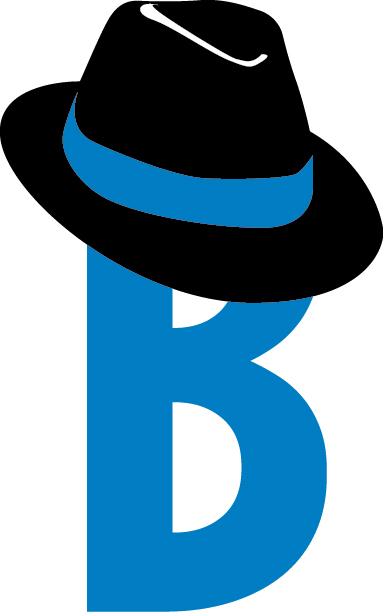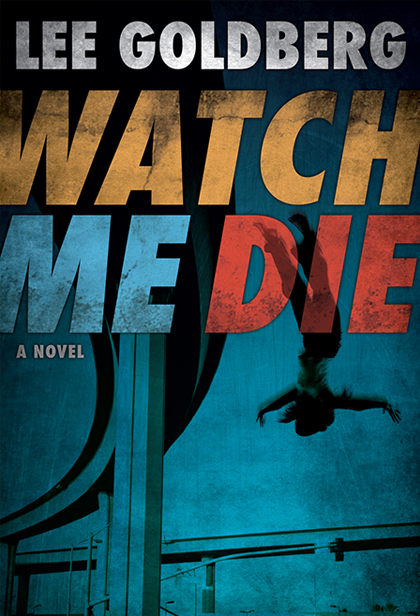 People are always writing me for advice about TV and publishing, not that I have any great wisdom to impart. But that doesn’t stop me from replying anyway.
People are always writing me for advice about TV and publishing, not that I have any great wisdom to impart. But that doesn’t stop me from replying anyway.
Hello Mr. Goldberg:
I was referred to you by a friend of your friend XYZ…I am 64 years old and I have a screenplay that desperately needs a place to go, and your name was delivered as the unquestionable favorite. Please let me know if you might be able to provide me any guidance or wisdom. Should you not be able or interested, (she tries to put away that big pouty lip), your suggestion of someone else would be greatly appreciated.
I am sure you get a lot of emails and maybe this may not reach you, but here’s hoping. I am an aspiring actress/model and went to a meeting with XYZ at Culver Studios last week. He claims to have been a director/producer for NBC/Universal but the IMDB just doesn’t seem legitimate. He also claims to be married to actress XYZ but there is hardly any information on her either.
He says he wants me to come and work for him and learn the business to become an assistant producer and star in his upcoming movies, but things just aren’t adding up. I called NBC Universal and asked them if his name was on the employee list and was not. Due to all of the scams and human trafficking which he spoke a lot about, I want to be safe. Do you know how I can navigate safely through this industry and or have any advice for me on how I can obtain legitimate information and backgrounds on producers and directors?Well, it sounds like you already checked this guy out and learned that something is very fishy. His picture on Imdb also seems amateurish to me… as if by standing beside the studio gate, which anybody can do, he’s trying to confer legitimacy on himself. I’d steer clear of him. Keep in mind, anybody can rent studio space. Just because their office is on a movie studio lot does not mean they are legitimate. In addition to imdb, you can check out producers with the PGA (Producers Guild of America) to see if they are members… or, if they are writer/producers, you can check with the WGA (Writers Guild of America) to see if they are members (or if their companies are guild signatories). You can find out if a director is legit by contacting the DGA (Directors Guild of America) and seeing if he or she is a member. If they are offering you acting jobs, check them out with SAG (Screen Actors Guild) to see if they are signatories or if there are any issues with their company that the union knows about. Lack of produced credits on imDb and non-membership in one of those guilds would raise a big red flag for me.
A Great Interview with David Levinson
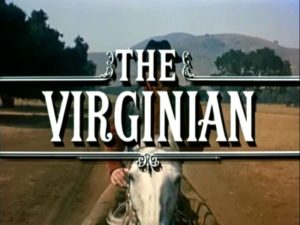 The good folks at the Classic TV History blog are doing God’s work. They’ve just done their second, in-depth interview with TV writer-producer David Levinson, whose many credits include THE BOLD ONES: THE SENATOR, SARGE, CHARLIES ANGELS, HART TO HART, NIKITA and scores of other shows. It’s a long, detailed, terrific interview filled with fascinating anecdotes about the writing and production of the various series that he’s been associated with over his long, varied career. It doesn’t matter whether you know the shows that he’s worked on or if you liked them — this is gold for anybody interested in TV history or in a career in television. I loved every word of the interview. Levinson has been around a long time and he’s got some great stories, like this one about an episode of THE VIRGINIAN…
The good folks at the Classic TV History blog are doing God’s work. They’ve just done their second, in-depth interview with TV writer-producer David Levinson, whose many credits include THE BOLD ONES: THE SENATOR, SARGE, CHARLIES ANGELS, HART TO HART, NIKITA and scores of other shows. It’s a long, detailed, terrific interview filled with fascinating anecdotes about the writing and production of the various series that he’s been associated with over his long, varied career. It doesn’t matter whether you know the shows that he’s worked on or if you liked them — this is gold for anybody interested in TV history or in a career in television. I loved every word of the interview. Levinson has been around a long time and he’s got some great stories, like this one about an episode of THE VIRGINIAN…
Oh, this is good. By the way, I was a total asshole about this. This is my second season on the show as a producer. I’m like 27 years old. I’d done like four episodes the season before, and I wanted desperately to do a show about black cowboys. I talked to a writer by the name of Norman Jolley, and we’d come up with a really good story about a cowboy who had worked his whole life to save up the money for his son to go to college, and then he got ripped off. In order to get his money back, he falls in with a bunch of rustlers to steal the cows from John McIntire’s ranch, and bad things happen.
Nowhere in the script did it mention that the father and son were black. Just the character names.
Everybody liked the script, and I go in to see the executive producer, and he says, “Who are you thinking of casting?”
I said, “I want to cast James Edwards.”
There’s this long pause, and the executive producer – who, by the way, was the nicest fellow you’d ever want to meet: Norman Macdonnell, who had produced Gunsmoke all those years – looked at me and said, “Isn’t he black?”
I said, “He was the last time I saw him.”
Very gently, he explained to me that we had a primarily redneck audience and you just couldn’t cast a black man as the guest star in one of the shows. I said to him, “Well, listen, you’re the boss, and if that’s the way you feel, that’s what we’ll do. But I feel it only fair to tell you that I’m going back to my office and calling The New York Times and The L.A. Times to tell them about this conversation.”
He came up from behind the desk, and he was a big guy. His face was totally flushed and he looked at me and said, “You little cocksucker.”
I said, “Yes, sir.”
And we cast Jimmy Edwards. The show went on the air. There were no letters. Nobody fucking noticed that there were two black actors playing the leads in this show. But shortly thereafter I left The Virginian.
No surprise. But the real pleasure of the interview with Levinson aren’t dramatic moments like that but the meat-and-potatoes stuff about the making of TV. I strongly recommend the interview… and everything else on the Classic TV History blog, especially their incredible Oral History of THE SENATOR, which is better than a lot of TV books that I’ve read.
Scribe Award Nominees Announced
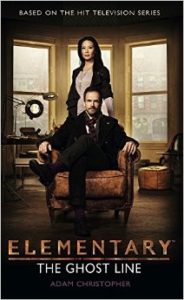 The International Association of Media Tie-In Writers, which I co-founded some years ago, is pleased to announce the Scribe Award Nominees for 2016.
The International Association of Media Tie-In Writers, which I co-founded some years ago, is pleased to announce the Scribe Award Nominees for 2016.
BEST ORIGINAL NOVEL – GENERAL
BEST ORIGINAL NOVEL – SPECULATIVE
Deadlands: Ghostwalkers by Jonathan Maberry
HALO: Last Light by Troy Denning
HALO: New Blood by Matt Forbeck
Pathfinder: Forge of Ashes by Josh Vogt
Shadowrun: Borrowed Time by R. L. King
Star Trek The Next Generation: Armageddon’s Arrow by Dayton Ward
Star Trek Seekers 3: Long Shot by David Mack
ADAPTED NOVEL – GENERAL AND SPECULATIVE
SHORT STORIES
AUDIO
Dark Shadows “Bloodlust” by Alan Flanagan, Will Howells and Joseph Lidster
Dark Shadows “In the Twinkling of an Eye” Penelope Faith
Doctor Who “The Red Lady” by John Dorney
Doctor Who “Damaged Goods” by Jonathan Morris
Pathfinder Legends: “Mummy’s Mask: Empty Graves” by Cavan Scott
A Field Trip to Australia and New Zealand
Nothing beats “boots on the ground” for researching locations for a book. I always pick up details that no guidebook, or Google Earth trawl, will turn up. Not only that, but I love to travel to new places…here or abroad. I just returned from a three week trip to Australia and New Zealand to research the as-yet-untitled sixth Fox & O’Hare book.
 My travels this time took me first to Sydney (and Manly Beach and Bondi Beach), where everyone was too damn good looking. Even the old people looked like models. All the women seemed to be wearing black… my theory is that they were morning all the fat, imperfect friends and relatives that had been exiled from the city. After three days roaming Sydney, we headed off to Brisbane, where I was relieved to see not everybody was perfect. My wife desperately wanted to see some Koalas, so we went to a local reserve where we could hold the cuddly animals and get up-close-and-personal with kangaroos. We roamed the city on foot and by ferry, then rented a car and headed off to explore the Gold Coast one day and the Sunshine Coast the next. The two coasts couldn’t be more different. The Gold Coast highly developed, with skyscrapers, high-end stores, and endless beaches…while the Sunshine Coast is more laid-back, less developed, but also with long, flat seemingly endless beaches.
My travels this time took me first to Sydney (and Manly Beach and Bondi Beach), where everyone was too damn good looking. Even the old people looked like models. All the women seemed to be wearing black… my theory is that they were morning all the fat, imperfect friends and relatives that had been exiled from the city. After three days roaming Sydney, we headed off to Brisbane, where I was relieved to see not everybody was perfect. My wife desperately wanted to see some Koalas, so we went to a local reserve where we could hold the cuddly animals and get up-close-and-personal with kangaroos. We roamed the city on foot and by ferry, then rented a car and headed off to explore the Gold Coast one day and the Sunshine Coast the next. The two coasts couldn’t be more different. The Gold Coast highly developed, with skyscrapers, high-end stores, and endless beaches…while the Sunshine Coast is more laid-back, less developed, but also with long, flat seemingly endless beaches.
From Brisbane, we flew on Emirates to New Zealand. I’ve never been on an Emirates plane before and was amused by the wood-grain trim around the portholes and the faux-wood toilet seats in the unusually spacious lavatories. We were welcomed in both Auckland (and later in Wellington) by cousins of actress Alexia Barlier, who was one of the stars of my movie FAST TRACK: NO LIMITS. We spent a day roaming around Auckland on foot, then the following day we took a boat out to Waiheke Island, rented a car, and explored the entire island. We managed to visit all of Waiheke’s beautiful beaches and even visit two wineries for meals and some wine-tasting.
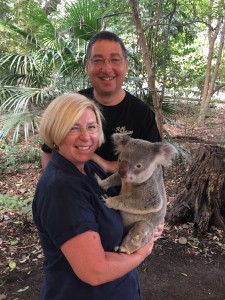
We arrived in Wellington in time to enjoy the final day of Cuba Duba, a vibrant street fair, and were met by more of Alexia’s cousins, who introduced us to the city and entertained us in their incredible, hillside home, where they have breathtaking views of the city. We also met up with Jeroen Ten Berge, the artist who designed the covers for my DEAD MAN books, WATCH ME DIE, KING CITY, McGRAVE, and many other titles. He showed us around and it was a real treat to see the city through his eyes. After that, we rented a car and explored the countryside and the coast on our own, catching some dramatic vistas along the way.
Then it was back to Australia for a few days in Tasmania, where we explored the city of Hobart and followed the so-called Convict Trail, soaking up the dramatic history of the island…and its roots as a penal colony. We also visited the bizarre, controversial, stunning, and unforgettable MONA Museum…which was like visiting an art galley designed by SPECTRE.
The entire trip was a fascinating and inspiring experience. I’m looking forward now to delving into the history of Australia, Tasmania and New Zealand, searching for those nuggest that will make the places, and the characters who live there, come alive in Nick and Kate’s next adventure. I took hundreds of photos that I can use to refresh my memory as I write. Here are just a few…
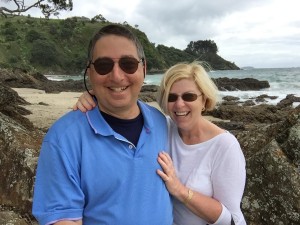
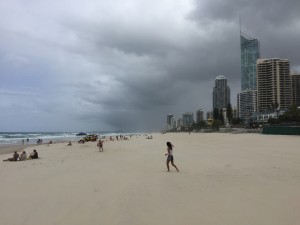


Working up a Storme: WL Ripley on Creating Series Characters
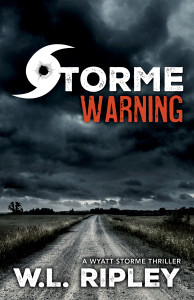 My friend W.L. Ripley is the author of two critically-acclaimed series of crime novels — four books featuring ex-professional football player Wyatt Storme and four books about ex-Secret Service agent Cole Springer. His latest novel is Storme Warning, a stunning new mystery/thriller that’s earned him well-deserved comparisons to Robert B. Parker…and from the likes of Ace Atkins, who is now writing Spenser. Here Rip talks about creating Storme…and series characters in general.
My friend W.L. Ripley is the author of two critically-acclaimed series of crime novels — four books featuring ex-professional football player Wyatt Storme and four books about ex-Secret Service agent Cole Springer. His latest novel is Storme Warning, a stunning new mystery/thriller that’s earned him well-deserved comparisons to Robert B. Parker…and from the likes of Ace Atkins, who is now writing Spenser. Here Rip talks about creating Storme…and series characters in general.
Wyatt Storme evolved from a love of mystery characters like Travis McGee, Spenser, and the protagonists of Elmore Leonard’s many novels. But in shaping Storme as a series lead, I wanted a neo-classic mystery/thriller hero who would seem familiar and yet would be uniquely his own person and uniquely my own creation.
Storme is neither a detective nor a police officer, which places him in Travis McGee territory, but he will use deduction and reasoning to isolate and learn about the villain. This is a nod to the deductive powers of Sherlock Holmes, without whom the modern mystery would not be what it has become.
Storme & Chick vs Spenser & Hawk
Wyatt Storme and his friend Chick Easton, a deadly and deeply troubled ex-CIA agent, are often compared to the Robert B. Parker’s team of Spenser and Hawk. But I believe Storme is more closely related to John D. McDonald’s Travis McGee because he is a man apart; a man taking his retirement in pieces. Yet unlike McGee, Storme is often reluctant to insinuate himself into other people’s troubles and does not seek a financial reward. The character of Chick Easton is closer Nero Wolfe’s Archie Goodwin, only more deadly. Easton’s character often prods Storme into action and, like Goodwin, he keeps the dialogue lively and caustic. The Wyatt Storme novels blend three sub-categories of the mystery/thriller genre: tough-guy, western, and reluctant detective.
If you look at Robert B. Parker’s Spenser (brilliantly continued by author, Ace Atkins), the most recognized tough guy in the modern literary world, you’ll find that he possesses some traits associated with Sam Spade and Phillip Marlowe but is distinctively his own man. Spenser quotes poetry and literature like a University professor yet he is as comfortable throwing a left hook to dispatch anyone foolish enough to bull up on him. He still carries the classic .38 police special but is at ease handling the modern semi-automatic weapons. Spenser is the first Renaissance man in the tough-guy mystery genre and has opened up possibilities for all of us who write.
Elmore Leonard’s Raylan Givens Reflects his Pantheon of Characters
Elmore Leonard never saddled himself with just one hero yet many of his protagonists shared attributes that were singular to his pantheon of characters. They usually were unflappable regardless of the situation. They rarely spoke excitedly or in anger. The best example of this, and Leonard’s most memorable and likewise most singular character, is Raylan Givens.
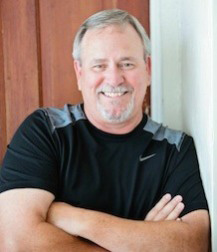
Givens was the son of Kentucky coal-miners and a U.S. Marshal who was an expert with a hand gun. He taught marksmanship to other U.S. Marshal’s and was deadly cool when dispatching a bad guy quite often giving the outlaw a chance to re-consider. “I’m a dead shot. I hit exactly what I aim at. If I pull I shoot to kill.”
Note the nod to the old Western heroes of cinema and the western genre. Givens is a Marshal like Matt Dillon or Wyatt Earp. Givens participates in shoot-outs like many Clint Eastwood characters (There are marked similarities between Givens and Clint Eastwood in the novels. Height, body-build, cold statement that his enemy is about to die). At once, we are familiar with Raylan Givens and at the same time he is a unique character in his own right.
Storme is, like the above, a neo-classic hero. Both of my main series characters, Wyatt Storme and Cole Springer, are denizens of the new American West. They are throwbacks, as comfortable in the great outdoors as they are with their backs against the wall, guns blazing. Like old Western Cowboys, they ride into town and save the day. Storme is Wyatt Earp to Easton’s Doc Holliday, Butch Cassidy to Easton’s Sundance Kid.
Dave Robicheaux and Stephanie Plum Are Among The Best
One of the best contemporary series characters is James Lee Burke’s, Dave Robicheaux, a disgraced N’Awlin’s cop whose desperate struggles with alcoholism and personal tragedy place Dave (now a Sheriff’s deputy in New Iberia Parish) in his own niche. Burke is unsurpassed at making the setting a part of his stories and the tortured soul of Dave Robicheaux is on display at all times. Robicheaux, like Spenser, is an intelligent man. Yet, unlike Spenser, Robicheaux is often confused and even lacks confidence in his assessment of his moral stance. Still, when his blood is up, Robicheaux is among the most violent of mystery heroes.
Janet Evanovich’s Stephanie Plum is smart, tough, and given to romantic adventurism that heretofore was a part of the male hero make-up. Evanovich plows new literary ground by making Plum a bond enforcement agent (Chick Easton performs this duty at times in the Storme lexicon). Plum is of Italian/Hungarian descent and vacillates between the romantic overtures of two different men. She is honest about her foibles, which create problems in her job, but it is this very self-deprecation that endears her to her readers and makes Stephanie Plum one of the most successful characters in the mystery genre.
There are many, many more examples. Sue Grafton’s Kinsey Millhone (a classic detective in the Phillip Marlowe/Jim Rockford tradition), James Patterson’s Alex Cross (criminal profiler), Ace Atkins other best-selling character, Quinn Colson (Ex-special forces Ranger), and Patricia Cornwell’s Kay Scarpetta (Medical Examiner) are among the best.
All of these authors write sharply drawn, well-researched characters that give us a peek behind the curtains of very unique aspects of these justice-dealing heroes and their occupations. They have also been successful mining the classic nature of the mystery/thriller genre and giving their character remarkable traits, not quirks. Too often beginning writers think they need to make their characters quirky. Quirky characters are the province of situation comedies, not mystery/thrillers.
Characters We Love, Books We Want to Read
One of the hardest aspects of a series character is keeping them fresh through many books. All of the writers that I’ve talked about do so brilliantly and aspiring writers should study their work to learn how they pull it off.
Developing a lasting series character is the hardest thing you’ll ever love doing. I enjoy looking into Wyatt Storme’s past, how he evolved into the person he has become and witnessing the sights, sounds, and his interaction with the universe he inhabits.
I write novels that I would like to read. My hope is that they are also novels that you will want to read, too. I want the reader to keep turning pages and be continually entertained with laughter, hope, suspense, sudden danger and the consequences of life….and that you will find all of that in Storme Warning.
The Recipe Behind Gerald Duff’s MEMPHIS RIBS
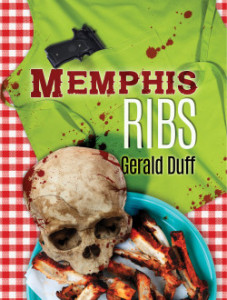 My friend author Gerald Duff shares the story behind the writing of his tasty new novel Memphis Ribs, which Entertainment Weekly calls ‘A tangy tale of murder, gang warfare, crack cocaine, and barbecue.’ I’m sucker for a great thriller and for barbecue, so this was a home run for me!
My friend author Gerald Duff shares the story behind the writing of his tasty new novel Memphis Ribs, which Entertainment Weekly calls ‘A tangy tale of murder, gang warfare, crack cocaine, and barbecue.’ I’m sucker for a great thriller and for barbecue, so this was a home run for me!
When I wrote my novel Memphis Ribs, I did it for the same reason that all writers take up a task that lasts so long and uses up so much electricity. I was mesmerized by the topic, in this case my trying to understand the essence of the Bluff City where I had come to live for a spell. And it was a spell, because that’s what Memphis casts upon those who come to live with her.
Memphis is an embodiment of the central paradox of the South. It is both tight and loose, and so are Southerners. Memphis has more churches of every denomination, conducting more worship services, attended by more of the faithful, than any comparably sized city in the nation.
Memphis also has more low dives and honky tonks, more high and low bars, more prostitutes and drug houses, more robberies and gang shootings, more muggings and murders, just generally more of the fast life, than any other metropolitan area in the country. If Nashville, Tennessee’s richest city, is about the greed for money and the drive to make it, Memphis is about giving in, abandoning all hope, and having a good time.
Memphis has suffered from calamities over time, including a yellow fever contagion which decimated the city in the nineteenth century and the assassination of Dr.King in the twentieth century which dealt the finishing blow to Memphis’s status as a contender in the big world of growth and commerce. For the commercial hopers and city planners, these disasters were apocalyptic, but for the writer they created a climate and culture conducive to dream, disillusionment, regret, and loss.
The advantages for a novelist are clear and compelling. All is vanity, endeavor is doomed, and success is fleeting, evanescent, and gone. That’s the country where a novelist feels most at home.
How all this influenced me as a chronicler of a fictional pair of police detectives – one black, one white – trying to solve some crimes in the Bluff City is clear enough. Memphis and its contradictions and energies and despair and humor emboldened me to try to capture in fiction some of its toughness, violence, obsession with barbecue and beautiful women, its racism and restiveness, and its hard-edged hilarity. I tried to do so by casting as a Memphis homicide cop a man in North Mississippi I had come to know. He was an independent cotton farmer, a Vietnam veteran who wasn’t outwardly bothered by his year in that war as a combat infantryman, and a man completely at ease with himself. He drank copious amounts of bourbon without seeming to become drunk, he loved his wife, and he had many friends, black and white, who admired and gave him great room and latitude. His fictional partner in the novel knows him to the core.
All I’m trying to do in Memphis Ribs is to show how Danny M. would act if called upon to sort out some crimes in the Bluff City. In my attempt, I hope I’ve captured some of the gut and soul of that city on the big river that flows through the heart of America.
Mark Smith on Writing “The Death of The Detective”
My friend Mark Smith’s The Death of the Detective is widely considered to be one of the best detective novels ever written…and was a National Book Award finalist. It was a honor for me to be able to republish it this last month through my company, Brash Books. I’ve asked Mark to share the story of how his remarkable book was written.
 I think it was Heywood Hale Broun who said, “When a professional man is doing the best work of his life, he will be reading only detective novels,” or words similar. I hope, even at my age, I have my best work ahead of me, but when I was writing The Death of the Detective, in my leisure hours I was exhausting the classic English who-dun-its written between the Wars, favoring Dorothy Sayers and Freeman Wills Croft, while also re-reading Raymond Chandler and re-discovering Nero Wolfe. In this regard I shared the addiction with the likes of William Butler Yeats, William Faulkner and FDR, among others.
I think it was Heywood Hale Broun who said, “When a professional man is doing the best work of his life, he will be reading only detective novels,” or words similar. I hope, even at my age, I have my best work ahead of me, but when I was writing The Death of the Detective, in my leisure hours I was exhausting the classic English who-dun-its written between the Wars, favoring Dorothy Sayers and Freeman Wills Croft, while also re-reading Raymond Chandler and re-discovering Nero Wolfe. In this regard I shared the addiction with the likes of William Butler Yeats, William Faulkner and FDR, among others.
My first two novels, the companion novels, Toyland and House Across the White (original title, The Middleman), were psychological thrillers and a modern retelling of a fairy tale. Before taking on the ghost story, my fourth novel, The Moon Lamp, I settled on my favorite genre, the detective story. Originally sketched out as something of a short story in which the detective in his quest of a killer discovers only his victims, with each murder leading both men to the next, the book became seriously ambitious when I added the moral and ironic complication of the detective himself being somehow responsible for the deaths by reason of his continued pursuit of the killer. This seemed to me a wonderful metaphor for the America of my time and place. And the detective as my representative American—or hero, if you wish. So much better for an urban environment than a cowboy.
The novel became enlarged when I added an interwoven subplot of young people and a minor plot of gangsters and made the killer’s victims believable round characters who were either sympathetic or interesting, so that, in a departure from the genre and the movies, the reader would be emotionally effected when their deaths occurred. After all, the tradition in Chicago writing, from Dreiser to Bellow, is compassion. Adding to the novel’s length was my recreation of each particular setting where the corpses were found strewn across the landscape of what is now called ‘Chicagoland”, thereby involving as many varied localities as I could in the crimes.
Many readers would say Chicago was the main character in the book, a response that surprised and disappointed me. Only years later did I come to find there was some justification for this observation. In my day, Chicago, for guys like me, was pretty much an open city, and I felt free to venture where I pleased. After high school, I worked as a mucker (sandhog) digging the subway extension beneath the post office, was a tariff clerk for the CBQ Railroad, the timekeeper on the foundation work for the Inland Steel Building and a merchant seaman on the Great Lakes before graduating from Northwestern University and living on the Gold Coast– across from the Ambassador East, no less.
Some readers, including allegedly mafioso and their children, have claimed the gangster plot is the best piece of the book, and that the gangsters are entirely believable, recognizable characters, perhaps something of a first in American fiction. The question asked then, is how did I come by my insights and knowledge? Henry James said writers should “receive straight impressions from life”, a piece of advice I find irrefutable for a naturalistic writer. Lo and behold, at the age of sixteen I worked as a busboy one summer at a nightclub-restaurant on the outskirts of Chicago owned by a former Capone mobster that was frequented by his fellows in the trade, alone (sometimes to play cards in a closed-off dining room), or with their families. These people not only became human to me, they became ordinary, and for a writer, now accessible to the play of his imagination. For example, I witnessed the tipsy top mobster in Chicago at closing time fail miserably in his attempt to pick up a not-so-exciting waitress, while my boss, a rather comic character who reminded me of Lou Costello ( a new restaurant in the area that threatened to be competition for his restaurant was bombed that summer every time it tried to open) would show up at the restaurant furious after losing a bundle at the track and order the help to drain all the nearly empty catsup bottles into new bottles. Without these contacts I suppose I would have had to take my gangsters from the cliches of movies and television (pre-Sopranos) and yes, probably from crime novels, also.
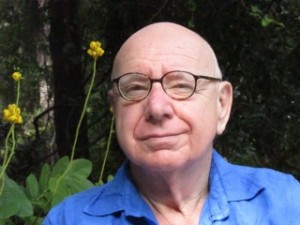
I have a couple of regrets about the novel. I notice a reviewer claimed I had predicted the practice of criminal profiling. If so, I’m not sure where that occurs in the novel. However I did make two predictions that came true that I cut from the book when I reduced its original text by some twenty percent which included not only blubber but the author’s commentary, prophecies and missteps into outright fantasy. One was the prediction that we would suffer from some new and deadly sexually transmitted disease which I changed to suggest old-fashioned syphilis. It seemed to me that given our new libertine sexual proclivities with limitless partners that such was likely to occur. Hence, soon thereafter, Aids. The other was my direct assertion that the mindless violence on film and television not only deadened us to the pain of violence, but encouraged violence, making it a centerpiece of our culture, a notion that was dismissed as hogwash at the time, but seemed an obvious cause and effect to me. Today this observation is pretty much accepted. So much for my career as Nostradamus.
A final admission. Although the Viet Nam war is never mentioned in this novel, and occurred after the time this novel takes place, it occurred during the time I was writing it with the nightly death count on the news. I like to tell myself my rage against that misadventure, along with my nostalgic love-hate relationship with the lost Chicago of my childhood and youth, were the energy sources behind the novel’s composition. It could even be said, with some hyperbole, that I wrote this book alone in my study in place of publically marching with the thousands demonstrating in the street.
One of my great pleasures of publishing this book, along with receiving a nomination for the National Book Award and seeing the novel on the New York Times paperback bestseller list, were the invitations to join the Mystery Writers of America and the British Crime Writers Association.
The Death of the Detective is available from Brash Books, Toyland and The House Across the White, from Foreverland Press.
The Boy Who Killed Demons
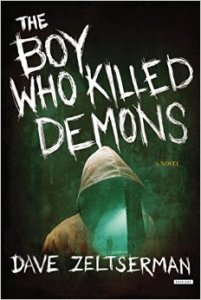 My friend and Top Suspense colleague Dave Zeltserman is a dual threat — equally adept at writing terrifying, and deeply unsettling horror novels as he is at writing stunning crime novels. His latest horror tale, The Boy Who Killed Demons, earned a starred review from Publisher’s Weekly and raves from both Kirkus Reviews and Library Journal. I invited Dave here to talk about the influences that shaped his new book.
My friend and Top Suspense colleague Dave Zeltserman is a dual threat — equally adept at writing terrifying, and deeply unsettling horror novels as he is at writing stunning crime novels. His latest horror tale, The Boy Who Killed Demons, earned a starred review from Publisher’s Weekly and raves from both Kirkus Reviews and Library Journal. I invited Dave here to talk about the influences that shaped his new book.
Every author has influences we’re aware of for our books, and sometimes we have subconscious influences that we might become aware of after the book’s been written. My first novel, Fast Lane, was heavily influenced by the great crime noir writer, Jim Thompson, even when I wasn’t aware of his influences. My crime novel, Pariah, was consciously influenced by the Whitey Bulger crime saga and a well-publicized plagiarism scandal involving a chicklit book. My Frankenstein retelling, Monster, was obviously influenced by Mary Shelley’s Frankenstein, but also by the Marquis de Sade, the German horror writer E. T. A. Hoffmann, and John Polidari’s The Vampyre. While I wasn’t aware of any influences on my crime noir novel, Small Crimes, years later I could see Dan Marlowe’s influence in my writing. With my latest horror novel, The Boy Who Killed Demons, that’s being released today, there are obvious influences by Lovecraft, the film They Live, and Spider-Man.
The Boy Who Killed Demons chronicles the struggles of 15 year-old high school student Henry Dudlow to keep the world safe from demons. When Henry was 13 he was a normal, outgoing kid, but then he started seeing certain people as demons, and things change dramatically for him. After convincing himself that these really are demons, he sets about to determine what they’re up to, and when he discovers that they’re trying to open the gates to hell, he has to do whatever it takes to stop them.
When I was a kid I read all the Lovecraft I could get my hands on, often (as Henry does in the book) riding my bike into Boston to visit used bookstores. While stylistically The Boy Who Killed Demons is very different than Lovecraft’s writing, the influences can still be seen, both in the way I sometimes show Boston and with the forces at work to allow evil, all-powerful entities into our world that will cause the destruction of everything we know.
One of my favorite horror films is John Carpenter’s They Live, and Demons gives a nod to the film as Henry watches it on TV one night and identifies strongly with Roddy Piper’s character, and the sacrifices Piper must make once he can see the aliens for what they are.
Finally, there’s the Spider-Man influence. As a kid, this was my favorite comic book, and Henry keeps watching the first Toby Maguire Spider-man for inspiration, identifying strong with the ‘with great power comes great responsibility’ idea, and later in the book the first Spider-Man comic book plays a role.
Brash Buzz
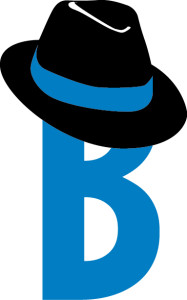 Brash Books is launching tomorrow with thirty books by twelve amazing authors…and I am SO excited. I’m pleased to say that the buzz has already been very positive. For example, last week Kirkus Reviews did a great interview with me and my Brash cofounder Joel Goldman . Here’s an excerpt:
Brash Books is launching tomorrow with thirty books by twelve amazing authors…and I am SO excited. I’m pleased to say that the buzz has already been very positive. For example, last week Kirkus Reviews did a great interview with me and my Brash cofounder Joel Goldman . Here’s an excerpt:
The Brash editions I’ve seen so far are handsome, trade-size paperbacks, with bold cover imagery and elegant interior design. “Joel and I decided right off that we were either going to do this ‘first-class’ or not at all,” says Goldberg, “with high-quality covers that vividly and definitively establish a franchise for each author or series that we are publishing. We also decided that our covers would be contemporary, regardless of when the stories take place, and that they would pop in thumbnail but be rich in details and textures when seen full-size. We believed that strategy, that look, would instantly set us apart from our competitors, many of whom are either marketing their books with ‘vintage paperback’ or ‘pulpy’ covers that immediately date the product, or are churning out hundreds of generic covers based on a few rigid templates to control their costs. It was a pricey decision for us to make, but we believe it’s the right one.”
Will the gumption and gusto shown by Brash Books help it triumph in an increasingly decentralized publishing environment, one that’s already spawned other paperback reprint houses (such as Hard Case Crime and Stark House Press)? It’s hard to tell. The two partners behind it, though, are certainly optimistic. “We wouldn’t be investing this much of our money into Brash if we didn’t love each and every book we are publishing,” Goldberg states. “We are also having a lot of fun together doing this. Yes, it’s a business. But it’s also been really exciting and fulfilling…especially when an author, or an heir, tells us how much they love the books and how much it means to them, emotionally, to see them brought back in such beautiful new editions. You can’t beat that feeling.”
We had so much to say that J. Kingston Pierce, the writer of the interview, took the quotes that he couldn’t fit into his Kirkus piece and ran it as a long, detailed post on his excellent blog The Rap Sheet. Here’s an excerpt:
JKP: Do you worry that with such a huge single-month rollout, some of the individual works you’re publishing might get lost?
JG: We’d be crazy if we didn’t worry about that, because we don’t want to publish more books than we can support.LG: But we also wanted to make a big splash, to launch with a list of books that truly announces who we are, that represents the range of work that we’re publishing, and that demonstrates the high quality that sets us apart from our competitors.
JG: Our marketing plan is a solid mix of old-school and new-school promotion, including magazine and convention ads, online ads, social media, and our killer Web site. We’ve hired an ad agency and a PR firm to help us, and we’re going to as many conventions as we can to get the word out.
LG: The best advertisements we have are our books and our authors. People are blown away by how gorgeous our books are and are very enthusiastic about the authors we’re publishing. Those readers are spreading the word for us better than any tweet or Google ad can.
And if that wasn’t enough, Publishers Weekly gave our premiere novel, Tom Kakonis’ Treasure Coast, a great review:
After more than a decade’s absence, Kakonis (Michigan Roll) returns with a darkly humorous caper novel that throws together an odd mix of characters whose conflicting aims and shifting alliances result in mayhem on Florida’s Treasure Coast. Failed gambler Jim Merriman makes an ill-considered promise to his dying sister to “watch out” for her hapless 21-year-old son, Leon. Con man B. Noble Bott and his assistant, Waneta Pease, are concocting a new scheme with Waneta serving as a medium to put the living in contact with the departed. Mismatched debt collectors, racist thug Morris Biggs and Latino Hector Pasadena, are about their nasty business, which includes Leon. Billie Swett, naïve trophy wife of Big Lonnie Swett, is the piece that will inadvertently connect them all. A hastily concocted kidnapping scheme, an ape-like PI named Don McReedy, and an incipient hurricane stir the plot. Kakonis overwrites at times, but he still offers strong entertainment.
We’re expecting more articles and reviews about Brash in the coming days. But what I really can’t wait to hear is what you think of our books… and whether you believe that we are living up to our motto: we publish the best crime novels in existence.
The Story Behind WATCH ME DIE
I’m interviewed in this new, short video from Firelight Entertainment Group about how my book WATCH ME DIE came about. I’m fond of all the books that I’ve written, but in some ways, this may be my favorite.
